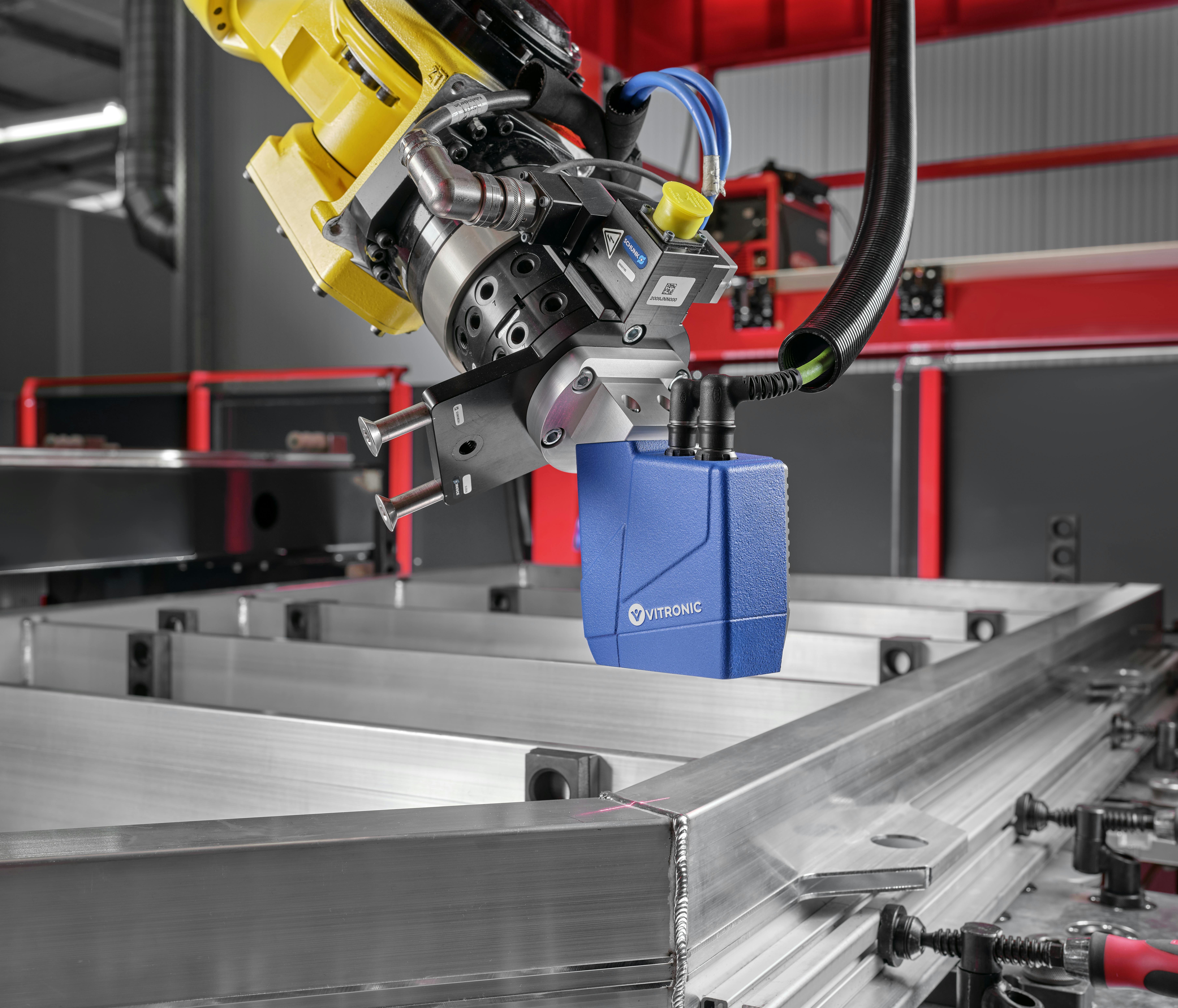회사Automated weld seam inspection for battery boxes of electric cars
VITRONIC is expanding the range of applications for VIRO WSI: the auto-matic inspection system can also be used to reliably inspect weld seams on battery boxes for electric cars. The boxes in the vehicle underbody are safety-critical components that make a decisive contribution to vehicle stability and fire protection. In individual cases, more than 150 individual weld seams must be perfect. However, this cannot practically be checked manually. VIRO WSI takes on this task: with a laser triangulation sensor and 3D image processing, the system permanently finds even the smallest defects in-line.
Battery boxes are critical for e-car safety
'Electric car burns out completely.' Headlines like this keep bringing up the safety aspect of e-cars. Yet statistically speaking, electric cars are extremely safe. They pose no greater fire risk than conventionally powered cars.
A major contribution to this is made by the battery boxes, which are installed in the vehicle underbody. They completely enclose the battery and are hermetically sealed. In the event of an accident, they protect the lithium-ion battery from damage and thus from short circuits that could trigger a fire. If the battery burns, it produces temperatures of over 1,000 degrees Celsius; only the fire brigade can then help. If the battery box remains intact during a collision, it can prevent ignition - or at least prevent the fire from spreading to the entire vehicle. In addition, the battery box is an integral part of the vehicle body and contributes to its stability.
Over 150 weld seams must be inspected
Manufacturers must therefore guarantee the stability of battery boxes. In addition to the materials used, the often over 150 weld seams that hold the component together are the primary contributors. They must be free of defects. In many plants, quality control is still performed by human inspectors. However, due to the sheer volume of welds and the design of the battery boxes, this is impossible. In addition, different welding methods are used for the boxes, which further complicates the inspection.
3D-sensor inspects all weld seams automatically
The VIRO WSI inspection unit solves this challenge: A robot with a 3D- sensor travels along all weld seams. The sensor measures the 3D surface geometry and thus creates 3D images of the seams. Image processing automatically detects deviations and welding defects and visualizes them for rework.
Automated weld inspection enables manufacturers to meet the requirement that battery boxes must be 100 percent visually inspected and safe. At the same time, they keep costs under control: the inspection is efficient, saves on personnel costs and can be seamlessly integrated into production processes.
